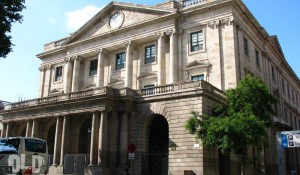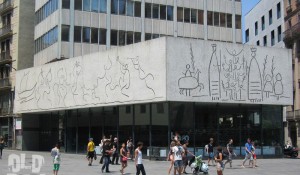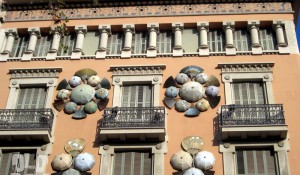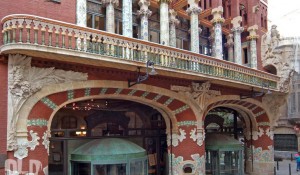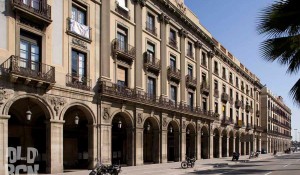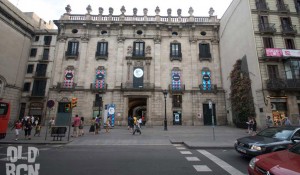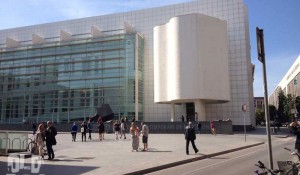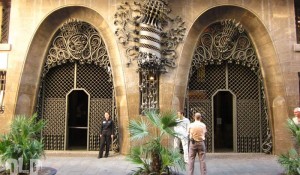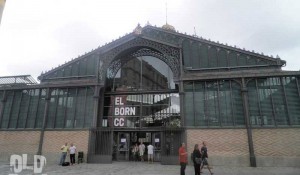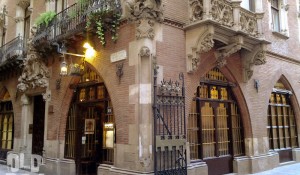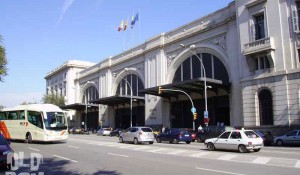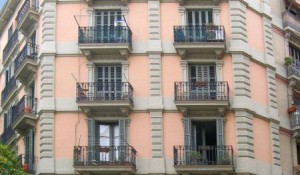Architecture and design
Discover the most emblematic buildings of internationally renowned architects
La Llotja
Building with a neoclassical façade which conceals one of Barcelona's best-kept secrets: a jewel of Civil Gothic architecture
Throughout its history, the house of La Llotja has been used for a number of purposes, which have all been linked with trade and seafaring life.

Architects' Association of Catalonia
The building of the Architects' Association, the Col·legi d'Arquitectes de Barcelona
The most striking element is the series of sand-cast friezes around the façade, designed by Pablo Picasso and produced by the Norwegian Carl Nesjar: the "children's frieze", on the façade overlooking Carrer dels Arcs, the "giants' frieze", on the façade in the Plaça Nova, and the "frieze of the Catalan flag", on the façade overlooking Carrer Capellans.

Casa Bruno Cuadros
La Rambla is an endless box of surprises. A box that opens and allows us to glimpse jewels, including this allegory to Orientalism
Its style, similar to modernisme with its use of colour and the delicacy of its decorations, have made the Casa Bruno Cuadros a worthy addition to the photograph albums of many of Barcelona’s visitors.

Palace of Catalan Music
The Palau de la Música Catalana was built between 1905 and 1908 by the architect Lluís Domènech i Montaner as a home for the Orfeó Català
The Palau de la Música Catalana is an architectural jewel of Catalan Art Nouveau, the only concert venue in this style to be listed as a World Heritage Site by UNESCO (4th December 1997), which today represents an essential landmark in the cultural and social life of Catalonia. Moreover it represents a symbolic emotional heritage for a whole people who identify with its history.

Porxos d'en Xifré
A wellspring of history nestling among the neoclassical porticos of an elegant building next to the old harbour, the Port Vell
Chosen as the site of the first photograph taken in Spain, the porticoed building, the Porxos d’en Xifré, is also known as the place where the Ruíz-Picasso family set up home when they came to live in Barcelona.

Virreina. Image Centre
A baroque building welcomes you in Barcelona’s Rambla, past Carme street, and it will awaken your curiosity because its highly-decorated façade and the interior courtyard and staircases give a glimpse of wealth and power
Go inside Palau de la Virreina and maybe you will be surprised by some art exhibition organised there.

Center of Contemporary Culture of Barcelona
There are many reasons why this culture center in Barcelona is an unmissable visitor attraction
The building in itself is an architectural landmark: the "Casa de la Caritat", a former workhouse in the Raval district, which underwent a refurbishment programme earning it the FAD architecture prize.

Palau Güell
The Palau Güell was designed by the young Gaudí and is a wonderful blend of medieval opulence and the architect's unique exuberant style
Completed in 1890, the building was the private residence of Gaudí's patron, Count Güell. The Palau Güell is a designated UNESCO World Heritage Site.

The Born Centre Cultural
Under the structure of an emblematic market with iron casting architecture of the 19th century, the archaeological site of 1700 Barcelona is found
Which is unique in Europe, along with the old market, the memory of the events of 1714 and exhibitions, all located at El Born Centre Cultural, a new and exceptional historic venue that links three centuries of history.

La Casa Martí
Casa Martí was built in 1896 on Barcelona's Carrer Montsió under the supervision of the architect Puig i Cadafalch
The building looks like a medieval castle, its façade inspired by the European Gothic style and decorated with the characteristic ornamental elements of Catalan art-nouveau, or modernisme. We can see beautiful stained glass, the meticulously crafted wrought ironwork, sculptures by Eusebi Arnau in the form of narrative capitals, and there is even a figure of Saint George on the corner.

Estació de França
The Estació de Fança, Barcelona's grand station, is a showcase of good taste and monumental architecture
It is a terminal station equipped with a monumental modernist metal structure and inaugurated in 1929 by king Alfonso XIII.

House Joan Magí
Magi House was built in the late nineteenth century by Enric Sagnier, one of the most prolific architects of the city.
Its creator is part of a neoclassical style and detail that can be seen in the building reveal the artistic style.





